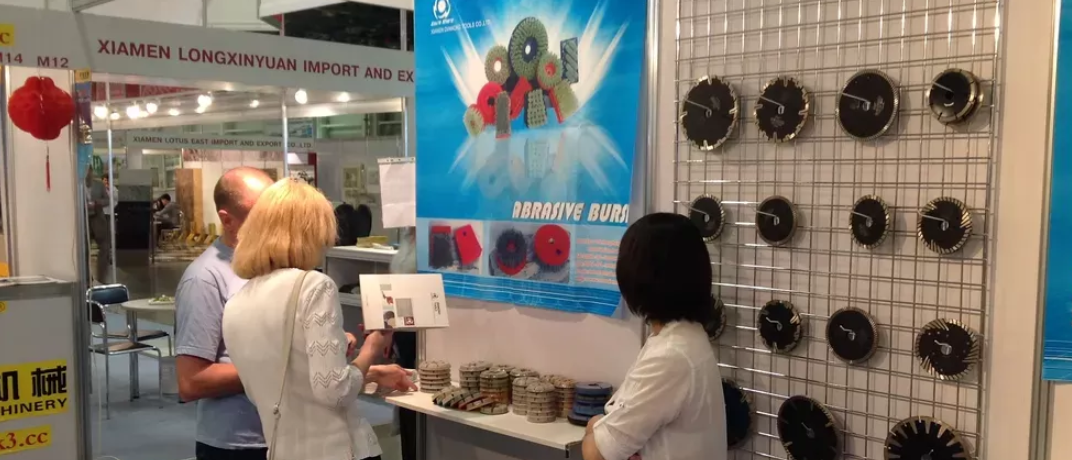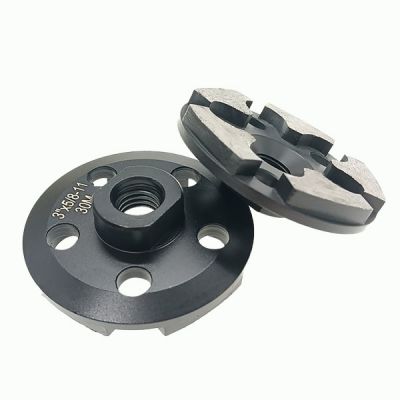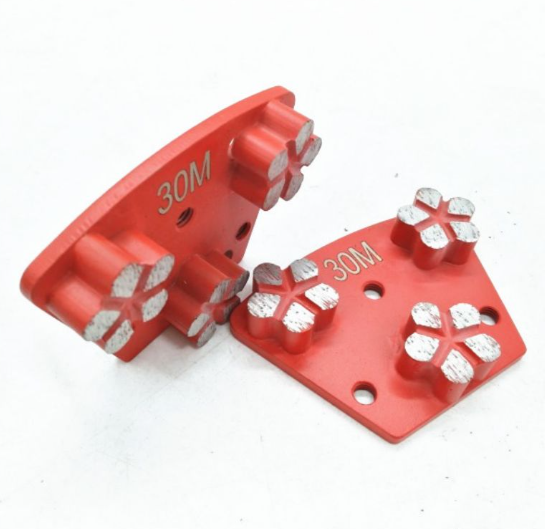XIAMEN MURAT is a leading provider and exporter of diamond tools. It's time to update our blog! Today, we’ll guide you on how to choose grinding tools based on polycrystalline diamond (PCD).
PCD grinding tools are widely used for efficiently and durably removing coatings, epoxy, paint, glue, and other tough materials from concrete surfaces. Choosing the right PCD grinding tool not only enhances work efficiency but also extends tool lifespan. This article will discuss key factors to consider when selecting PCD grinding tools.

1. Choose the Right PCD Type Based on Grinding Needs
PCD grinding tools are mainly divided into **Full PCD** and **Partial PCD**:
Full PCD: Suitable for removing thick coatings such as heavy epoxy, asphalt, and cured adhesives. It offers fast removal speed and strong cutting ability.
Partial PCD: Ideal for thinner coatings like light paint and mild sealers, helping to minimize surface damage.
For precise removal while maintaining a smooth floor surface, a hybrid PCD (PCD + diamond particles) is recommended, balancing cutting power and grinding performance.
2. Choose the Right PCD Shape and Arrangement
Different PCD shapes are suitable for various applications:
Square/Diamond PCD: Best for large-area, high-intensity grinding with high removal efficiency.
Round PCD: Provides smoother grinding, suitable for fine grinding and light coating removal.
Chamfered PCD: Reduces scratches, making it ideal for applications requiring a high-quality surface finish.
The arrangement of PCD segments also affects grinding performance. Evenly distributed PCD segments provide stable grinding results, while densely packed PCDs are better suited for aggressive removal of thick coatings.
3. Match the PCD Tool to Your Grinder Model
Different brands and models of grinders require specific PCD grinding tools. When selecting a PCD tool, ensure:
- The grinder’s base plate interface is compatible (brands such as HTC, Husqvarna, Lavina, WerkMaster, etc., have different designs).
- The grinder’s speed and power match the chosen PCD tool to avoid equipment damage or inefficient grinding.
- The grinder’s weight and pressure distribution: Heavier machines work better with harder PCD segments, while lighter machines may require softer PCDs for improved stability.
4. Consider the Work Environment and Floor Type
PCD grinding tools perform differently under various floor conditions. Consider the following factors when choosing a tool:
Concrete hardness: Hard concrete surfaces require highly durable PCD, while softer concrete may need a softer bond.
Coating thickness: Thick coatings require full PCD, while thin coatings work best with partial or hybrid PCD.
Moisture conditions: Wet grinding may require specially designed PCD tools to prevent clogging and efficiency loss.
5. Pay Attention to PCD Quality and Brand
The quality of PCD grinding tools varies by brand. Consider these factors when making a selection:
PCD particle quality: Higher-quality PCD particles are more durable and have a longer lifespan.
Welding process: Securely welded PCD tools are more durable and less likely to detach.
Brand reputation: Trusted brands such as Husqvarna, HTC, and Blastrac generally offer more reliable quality.

You can click here to browse our products. Choosing the right PCD grinding tool requires careful consideration of grinding needs, tool type, machine compatibility, and floor conditions. The correct PCD tool not only improves work efficiency but also extends the lifespan of your equipment and tools. Before making a selection, we recommend consulting with us to ensure the chosen tool meets your specific grinding requirements.

 VIEW MORE
VIEW MORE

